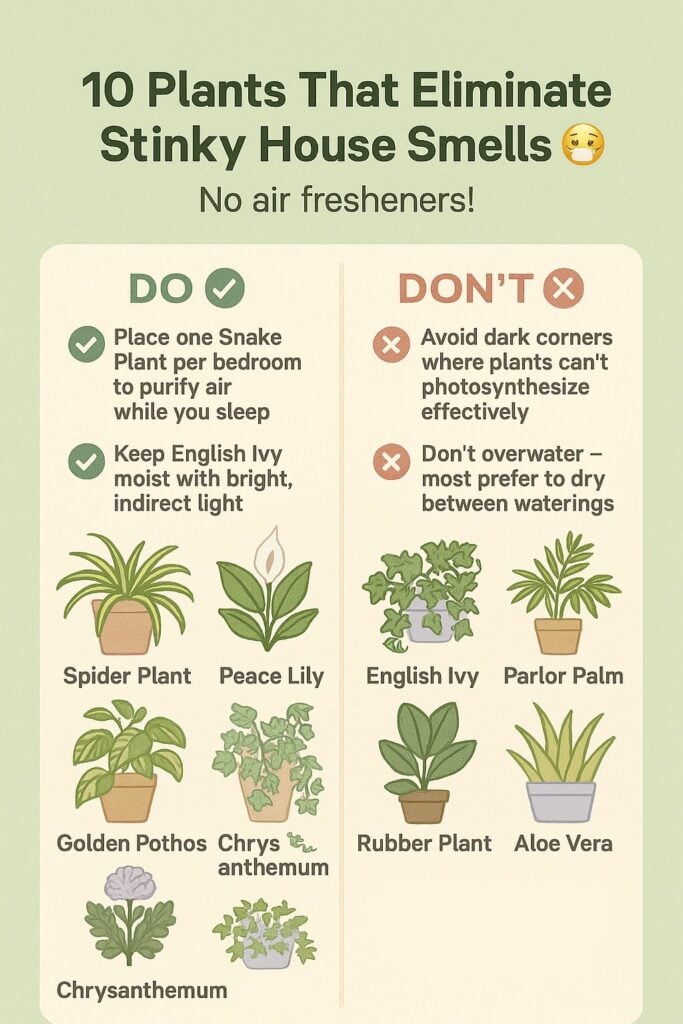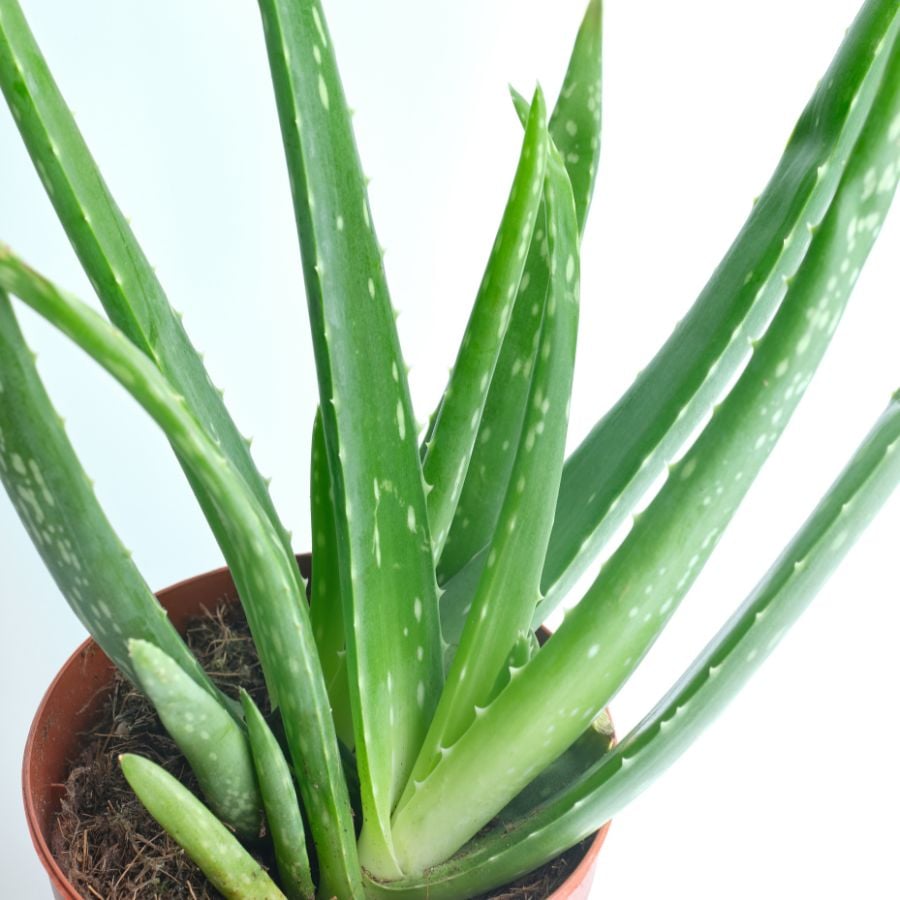
Your house shouldn’t smell like last night’s dinner mixed with pet odors and cleaning chemicals. Yet here we are, buying expensive air fresheners that mask problems instead of solving them.
The game-changer for your smelly home isn’t what you think. It’s not another spray or fancy diffuser.
NASA research reveals that certain houseplants can eliminate up to 87% of indoor air toxins within just 24 hours. These green powerhouses don’t just cover up odors. They destroy the molecules that cause them.
I was shocked to discover that plants work like living air purifiers, absorbing nasty chemicals through their leaves and roots, then breaking them down into harmless compounds.
It’s like having a cleanup crew that never takes a break and looks stunning while working.
1. Spider Plant (Chlorophytum comosum)
This resilient superstar is like the Swiss Army knife of air purification. Spider plants devour xylene and toluene. Those chemical nasties that create that “stuffy house” smell we all hate.

The secret most plant experts won’t tell you is that spider plants multiply faster than rabbits. One plant becomes ten within months, giving you an entire odor-fighting army. Plus, they’re virtually indestructible and pet-safe, making them perfect for plant-killing beginners.
2. Peace Lily (Spathiphyllum)
Don’t let those elegant white blooms fool you. Peace lilies are ammonia-destroying machines. They efficiently tackle the sharp, unpleasant odors from cleaning products and pet accidents.
Here’s the dramatic part: peace lilies droop when air quality gets bad, then perk up as they clean it. It’s like having a living air quality monitor that fixes problems while alerting you to them.
3. Lemon Balm (Melissa officinalis)
Lemon balm releases natural citrus oils that don’t just mask stale air. They neutralize it completely. This herb transforms musty, closed-up rooms into spaces that smell like a Mediterranean garden.
The breakthrough here is that you can use the leaves for tea while the plant purifies your air. It’s like getting a spa treatment and air purification service rolled into one gorgeous, fragrant package.
4. Golden Pothos (Epipremnum aureum)
Forget what you’ve heard about high-maintenance air purifiers. Golden pothos thrives on neglect while eliminating formaldehyde, benzene, and xylene. The chemical cocktail responsible for that “new furniture” smell that never goes away.
This trailing beauty works like a green waterfall, cascading from shelves while silently destroying airborne toxins. Most people make the mistake of babying their plants, but pothos actually performs better when you mostly ignore it.
5. Snake Plant (Sansevieria trifasciata)
The mother-in-law’s tongue might have a sassy name, but it’s serious about filtering formaldehyde, xylene, and toluene. This architectural beauty works the night shift, releasing oxygen while you sleep – unlike most plants that stop photosynthesis after dark.

Your snake plant is trying to tell you something important: it can survive in almost any condition while creating the freshest bedroom air you’ve ever breathed. One plant per bedroom is all you need for dramatically improved air quality.
6. Bamboo Palm (Chamaedorea seifrizii)
Bamboo palms specialize in destroying benzene and trichloroethylene. Those invisible chemicals that off-gas from furniture and building materials, creating that generic “house smell” that clings to everything.
The miracle of bamboo palms lies in their dual action: they filter toxins while acting as natural humidifiers. Dry air carries odors more intensely, so these palms simultaneously tackle the problem from both angles.
7. English Ivy (Hedera helix)
This classic trailing plant is formaldehyde’s worst nightmare. Those gorgeous cascading vines constantly absorb the chemical culprits lurking in your cleaning products, furniture polish, and carpet treatments.
English ivy works like a living curtain that purifies the air as it grows. The difference between amateur and pro plant parents is simply understanding that ivy needs consistent moisture and bright, indirect light to perform its air-cleaning magic effectively.
8. Gerbera Daisy (Gerbera jamesonii)
Those vibrant, cheerful blooms aren’t just Instagram-worthy. Gerbera daisies excel at removing trichloroethylene and benzene, particularly the residues left behind by dry cleaning chemicals.
The stunning revelation about gerberas is their ability to absorb carbon monoxide, making them perfect for homes near busy streets or attached garages. Beauty and life-saving air purification in one spectacular flowering package.
9. Aloe Vera (Aloe barbadensis miller)
Aloe vera demolishes formaldehyde and benzene while providing a pharmacy’s worth of healing gel in its thick, succulent leaves. It’s like having a first aid kit that also happens to purify your air 24/7.

The secret to aloe’s air-purifying power lies in its desert adaptation. These tough plants process toxins through specialized cells designed to extract every useful molecule from their environment – including the bad stuff floating in your air.
10. Chrysanthemums (Chrysanthemum morifolium)
NASA ranks chrysanthemums as one of the top air-purifying plants on the planet. These flowering powerhouses specifically target ammonia, making them perfect for homes with pets or strong cleaning product odors.
Chrysanthemums are like the special forces of air purification. They tackle the toughest chemical compounds while producing gorgeous blooms in every color imaginable. One thriving mum can transform an entire room’s air quality within days.
Transform your home from a chemical soup into a fresh, breathable sanctuary with these natural air purifiers. Your nose will thank you, your lungs will celebrate, and your guests will wonder what expensive air purification system you secretly installed.